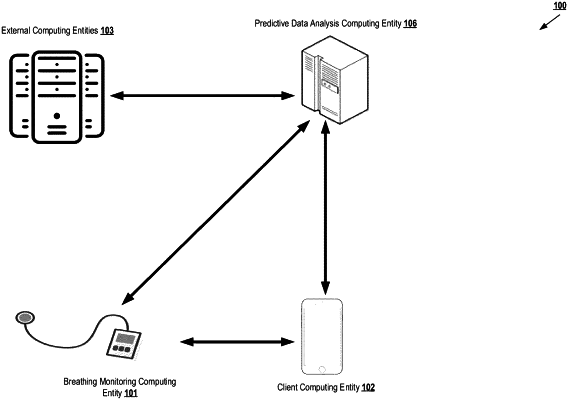| CPC A61B 5/7267 (2013.01) [A61B 5/0816 (2013.01); A61B 5/1135 (2013.01); A61B 5/4824 (2013.01); A61B 5/7275 (2013.01); G06N 20/00 (2019.01); G16H 40/67 (2018.01); G16H 50/20 (2018.01); G16H 50/30 (2018.01); G16H 50/70 (2018.01)] | 20 Claims |

|
1. A computer-implemented method comprising:
identifying, by one or more processors, observed breathing pattern sensory data for a monitored individual;
determining, by the one or more processors, an observed inspiration-expiration waveform pattern based at least in part on the observed breathing pattern sensory data;
generating, by the one or more processors and utilizing a splinting activity detection machine learning model, a predicted interruption score for the observed breathing pattern sensory data, wherein: the predicted interruption score (i) is generated based at least in part on the observed inspiration-expiration waveform pattern and one or more expected inspiration-expiration waveform patterns, and (ii) represents a likelihood that the observed inspiration-expiration waveform pattern represents splinting activity; and
initiating, by the one or more processors, the performance of one or more prediction-based actions based at least in part on the predicted interruption score.
|